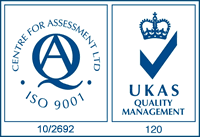The difference between Logistics Consultants and Warehouse consultants
Warehousing is actually a subset of logistics, not a separate activity. In this instance therefore warehouse consultants deal with activities that concern what goes on in a warehouse, including storage and profitability. A warehouse consultant will consider whether goods are being bought at the right price and with the right software in place can identify whether or not it makes economic sense to pass goods on through the chain (depending on what price the goods can achieve per unit) or whether in fact it might be cheaper to destroy goods. Sometimes this is the case
Warehouse consultants and product slotting
Warehouse consultants might also be involved in product slotting. This is something that we do every day without realising. At home, we might place our favourite book on an easily accessible shelf or store the most used cooking pans in the most convenient cupboard. The same concept applies to organizing products in a distribution centre or warehouse. But of course in this instance the challenge is bigger, and the impact is critical to the company’s bottom line. Effective slotting leads to improved warehousing including increased space utilization, reduced labour costs, and increased throughput. In many operations, improving slotting alone can increase picker productivity more than 20%, which rivals adding advanced technologies such as pick to light or voice picking. In addition, if product slotting is poor and improvements are not integrated into an advanced pick technology solution, the expected benefits may not be realized. A good warehouse consultant will identify this.
Logistics is the entire process of obtaining material from sources at the best possible prices and putting it in the hands of users at the best possible profit. Logistics consultants will be experts in transportation, information systems, warehousing and distribution, procurement, finance, performance Logistics consultants will always say that logistics is in fact a means to get a product to an end point.
Published on 25/04/2011














